Chapter 2: A Not Too Stable Pluralism, 1790-1865
Seedbed of a political revolution in the eighteenth century, Pennsylvania would become the fulcrum of the American industrial revolution in the nineteenth century. In the 1800s, Pennsylvania was an economic colossus driven by the expansion of mining, railroads, petroleum, iron and steel production, and manufacturing. The state's voracious demand for labor also fueled a new wave of European immigrants. Pennsylvania and the nation's emerging new economy would produce both great wealth and staggering working-class poverty.
Between 1800 and 1860, Pennsylvania's population more than quadrupled, from 600,000 to more than 2,900,000, as the new economic order transformed patterns of commerce, social interaction, and everyday life. A different Pennsylvania emerged out of the Industrial Revolution, but one still burdened by tensions between natives and newcomers. By the eve of the Civil War, the political turmoil of the 1790s, and protests like the Whiskey Rebellion in western Pennsylvania and
Opened in 1798 following a devastating outbreak of Yellow Fever five years earlier, Philadelphia's
In the early 1800s, Pennsylvania continued to serve as a refuge for people fleeing religious and political persecution, and for even larger numbers fleeing poverty and hoping for better lives. In the 1790s, a small group of refugees from the French Revolution set up a colony they called
Pennsylvania industries in the early 1800s acted as magnets attracting ever-greater numbers of newcomers from up and down the eastern seaboard and from overseas. Coal-mining and the construction of a vast transportation infrastructure of canals and railroads required large numbers of skilled and unskilled workers, a demand met in part by Welsh and Irish immigrants. Labor bosses recruited immigrants right off the boat in the 1830s to build the Main Line system of
Years before the great Irish Famine reduced Ireland's population from more than 8 million to 6 million (1845-1852), sustained Irish-Catholic immigration was greeted by a rising tide of ethnic and religious hostility throughout the largely Protestant northeast. The 1832 death of fifty-seven Irish immigrants working on the Philadelphia and Columbia Railroad at
Several years of violent street riots came to a head in Philadelphia County's Kensington district in May and July 1844, when organized nativist mobs set fire to more than a dozen Catholic buildings, including a nunnery school and
More Irish immigrated to Pennsylvania in the early 1800s than any other group-by 1850 they represented more than 50 percent of the state's foreign-born population-but Pennsylvania also attracted immigrants from other European nations, including German Jews. Philadelphia's small but well-established Jewish community was centered around several synagogues, the oldest of which was
Stable churches and social institutions, and the state's location just north of the
Simultaneously, growing numbers of enslaved African Americans fled from southern states into Pennsylvania, a center of the emerging "Underground Railroad" and abolition movements. Pennsylvania abolitionists' resistance to the 1850 Fugitive Slave Law led to a bloody confrontation in the farm community of
By the outbreak of the Civil War, Pennsylvania's was a different place than it had been at the dawn of the nineteenth century. Controversies tied to the new ethnic, racial and religious diversity threatened social and political harmony. Irish had replaced Germans as the Commonwealth's largest group of foreign-born residents, and the growing prominence of a separate Catholic parochial system of education had important cultural and political implications. All across the Commonwealth in the eighty years since American independence, denominational churches, synagogues, burial societies, and social clubs reinforced the permanence of new ethnic, racial, and religious customs and traditions.
Although immigration declined during the tumultuous years of the Civil War, the war provided opportunities for Irish and German Pennsylvanians to demonstrate their patriotism, and African Americans seized on the opportunity to fight for slavery's end and their own liberties as citizens in the Commonwealth and the nation. In Pennsylvania and elsewhere, however, black troops were often the targets of both subtle racism and overt hostility in the ranks. On the homefront, Quakers, Amish, Mennonites, and other historically pacifist denominations struggled with their own dilemmas of conscience as the conflict neared and then spilled into Pennsylvania.
During the war, Pennsylvania was a seething caldron of ethnic, class, and racial tensions. Wartime protests over the military draft and the Emancipation Proclamation reflected deeper social divisions. At the same time as New York's famous 1863 riots, Irish and other laborers in Pennsylvania's anthracite district rebelled against the coal barons' support of conscription and the thought of fighting for black rights in Pennsylvania's "other civil war." This anti-authoritarian violence among immigrant miners foreshadowed the rise of insurgent groups like the
In the half century that followed the end of the Civil War, the United States experienced a prolonged civil war between capital and labor, a national war in which Pennsylvania was a major battleground. A new, more sustained wave of foreign immigration and a surge in black migration during the First World War would again transform Pennsylvania's already complex multicultural society.





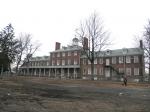



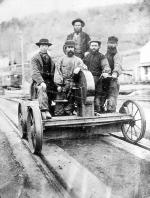

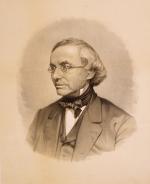
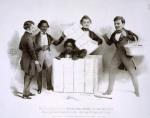

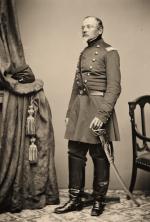
![Haupt Quartier No. 344 Nord 3te Strasse, zwischen Callowhill u. Vine des deutschen Feld-Regiments, Col. Henry Bohlen. [Poster] Regiment: Pennsylvania Infantry Regiment, 75th (1861-1865) Commanding officer: Bohlen, Henry, Col. Also associated: Matzdorf, H., Major Haupt Quartier No. 344 Nord 3te Strasse, zwischen Callowhill u. Vine des deutschen Feld-Regiments, Col. Henry Bohlen. [Poster] Regiment: Pennsylvania Infantry Regiment, 75th (1861-1865) Commanding officer: Bohlen, Henry, Col. Also associated: Matzdorf, H., Major](cache/small/1-2-1E04-25-ExplorePAHistory-a0n0c6-a_349.jpg)

